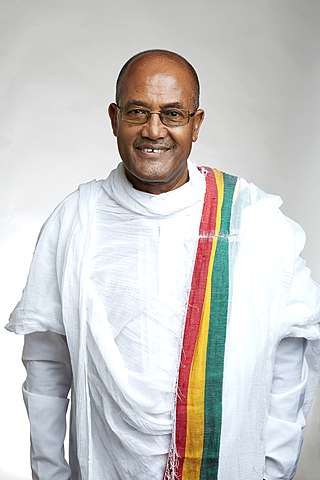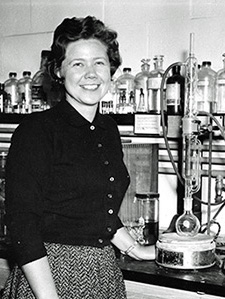Related Research Articles

Richard Evans Schultes was an American biologist, considered to be the father of modern ethnobotany. He is known for his studies of the uses of plants by indigenous peoples, especially the indigenous peoples of the Americas. He worked on entheogenic or hallucinogenic plants, particularly in Mexico and the Amazon, involving lifelong collaborations with chemists. He had charismatic influence as an educator at Harvard University; several of his students and colleagues went on to write popular books and assume influential positions in museums, botanical gardens, and popular culture.

Professor David John Mabberley, is a British-born botanist, educator and writer. Among his varied scientific interests is the taxonomy of tropical plants, especially trees of the families Labiatae, Meliaceae and Rutaceae. He is perhaps best known for his plant dictionary The plant-book. A portable dictionary of the vascular plants. The third edition was published in 2008 as Mabberley's Plant-book, for which he was awarded the Engler Medal in Silver in 2009. As of June 2017 Mabberley's Plant-book is in its fourth edition.

Paul Alan Cox is an American ethnobotanist whose scientific research focuses on discovering new medicines by studying patterns of wellness and illness among indigenous peoples. Cox was born in Salt Lake City in 1953.
Jerzy Rzedowski Rotter was a Polish-born Mexican botanist, whose focus was on Mexican floristics, taxonomy, and ecology.

José Cuatrecasas (1903–1996) was a Spanish botanist. He was born on March 19, 1903, in Camprodon, Catalonia, Spain.

Rogers McVaugh was a research professor of botany and the UNC Herbarium's curator of Mexican plants. He was also Adjunct Research Scientist of the Hunt Institute in Carnegie Mellon University and a Professor Emeritus of botany in the University of Michigan, Ann Arbor.
Peter Shaw Ashton is a British botanist. He is Charles Bullard Professor of Forestry at Harvard University, and director of the Arnold Arboretum there from 1978 to 1987.
Francis Raymond Fosberg was an American botanist. A prolific collector and author, he played a significant role in the development of coral reef and island studies.
Grady Linder Webster (1927–2005) was a plant systematist and taxonomist. He was the recipient of a number of awards and appointed to fellowships of botanical institutions in the United States of America. Webster's research included study of the diverse family Euphorbiaceae (spurges), on which he produced many papers, and he lectured on plant systematics, biogeography, and the ecology of pollination. Webster's career as a plant systematist was distinguished by the field research he undertook in remote tropical areas.

Sherwin John Carlquist FMLS was an American botanist and photographer.

Kamaljit Singh Bawa, FRS is an evolutionary ecologist, conservation biologist and a distinguished professor of Biology at the University of Massachusetts, Boston. He is also the founder of Ashoka Trust for Research in Ecology and Environment (ATREE). In 2012, Bawa received the first Gunnerus Sustainability Award, the world's major international award for work on sustainability. He is an elected member of the American Academy of Arts and Sciences. He was elected a Member of the American Philosophical Society in 2019.

Barbara Pickersgill is a British botanist with a special interest in the domestication of crops, the genetics, taxonomy, and evolutionary biology of cultivated plants, and the preservation of crop diversity. Her 1966 dissertation for the degree of Doctor of Philosophy from Indiana University concerned the taxonomy of Capsicum chinense. Her doctoral advisor was Charles B. Heiser.
Walter S. Judd is an American botanist and taxonomist, and distinguished professor in the Department of Botany, University of Florida since 2009.

Mireya Dorotea Correa Arroyo was a Panamanian botanist and plant taxonomist known for her work with the flora of Panama.

Sebsebe Demissew is an Ethiopian botanist who is Professor of Plant Systematics and Biodiversity at Addis Ababa University and Executive Director of the Gullele Botanic Garden in Addis Ababa, Ethiopia.
Beryl B. Simpson is a professor emerita in the Department of Integrative Biology at the University of Texas at Austin. Previously she was an associate curator at the Smithsonian National Museum of Natural History in the Department of Botany. She studies plant systematics and tropical botany, focusing on angiosperms found in the American Southwest, Mexico, and Central and South America. She was awarded the José Cuatrecasas Medal for Excellence in Tropical Botany for her decades of work on the subject.
Ana Maria Giulietti Harley is a Brazilian biochemist, botanist, and educator known for researching Eriocaulaceae, as well as her work at the University of São Paulo, State University of Feira de Santana, and Vale Institute of Technology. She has described over 70 species and gathered over 300 specimens. She was the 2013 recipient of the José Cuatrecasas Medal for Excellence in Tropical Botany. The standard author abbreviation Giul. is used to indicate this person as the author when citing a botanical name.
Jose Cuatrecasas Medal for Excellence in Tropical Botany was initiated in 2001 by the Smithsonian National Museum of Natural History, USA. It is named after José Cuatrecasas, a pioneering botanist and taxonomist who worked on the flora of tropical South America. It is awarded annually to a scientist who has made a very significant contribution to advancing the field of tropical botany. Nominations for the award can be made by all in the Botany Department at the museum.

Jean H. Langenheim was an American plant ecologist and ethnobotanist, highly respected as an eminent scholar and a pioneer for women in the field. She has done field research in arctic, tropical, and alpine environments across five continents, with interdisciplinary research that spans across the fields of chemistry, geology, and botany. Her early research helped determine the plant origins of amber and led to her career-long work investigating the chemical ecology of resin-producing trees, including the role of plant resins for plant defense and the evolution of several resin-producing trees in the tropics. She wrote what is regarded as the authoritative reference on the topic: Plant Resins: Chemistry, Evolution, Ecology, and Ethnobotany, published in 2003.
Robin B. Foster is a botanist studying tropical forests. He co-originated the "tropical forest dynamics plot".
References
- ↑ "University People |Harvard Magazine Jul–Aug 2001". Harvardmagazine.com. 21 December 2012. Retrieved 14 July 2013.
- ↑ "Knapp Receives 17th Cuatrecasas Medal". The Plant Press. 22 (3). 2019. Retrieved 23 April 2020.